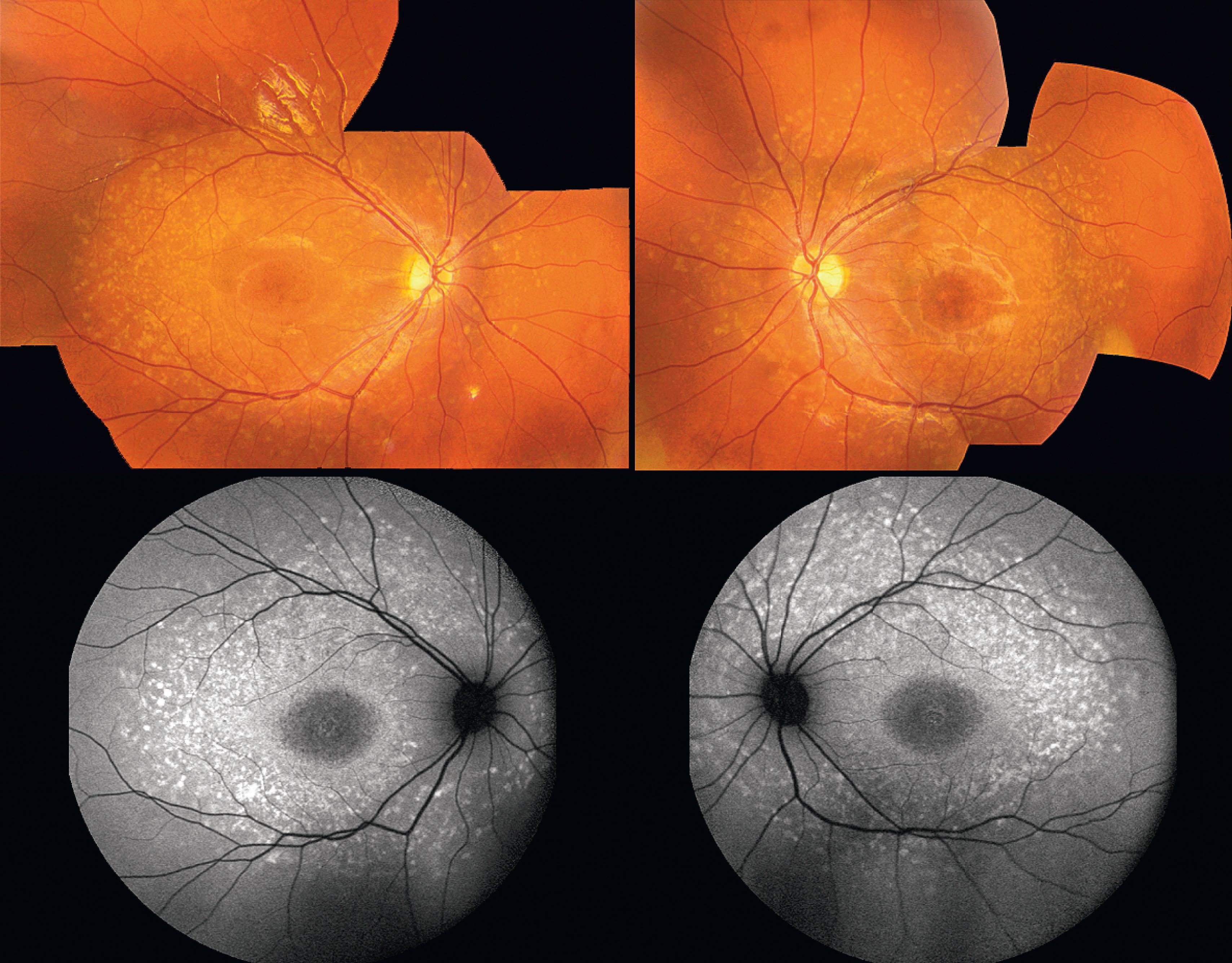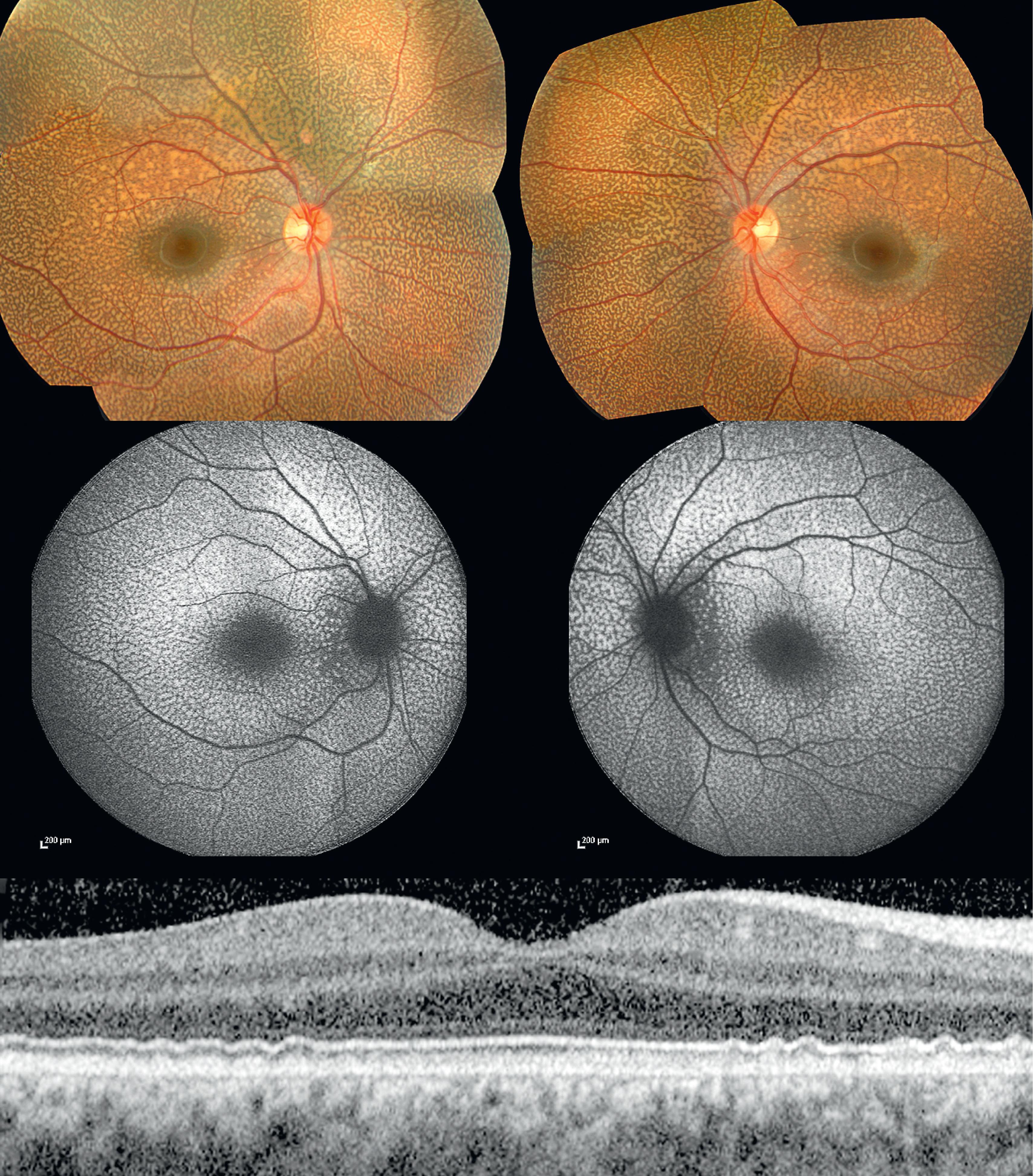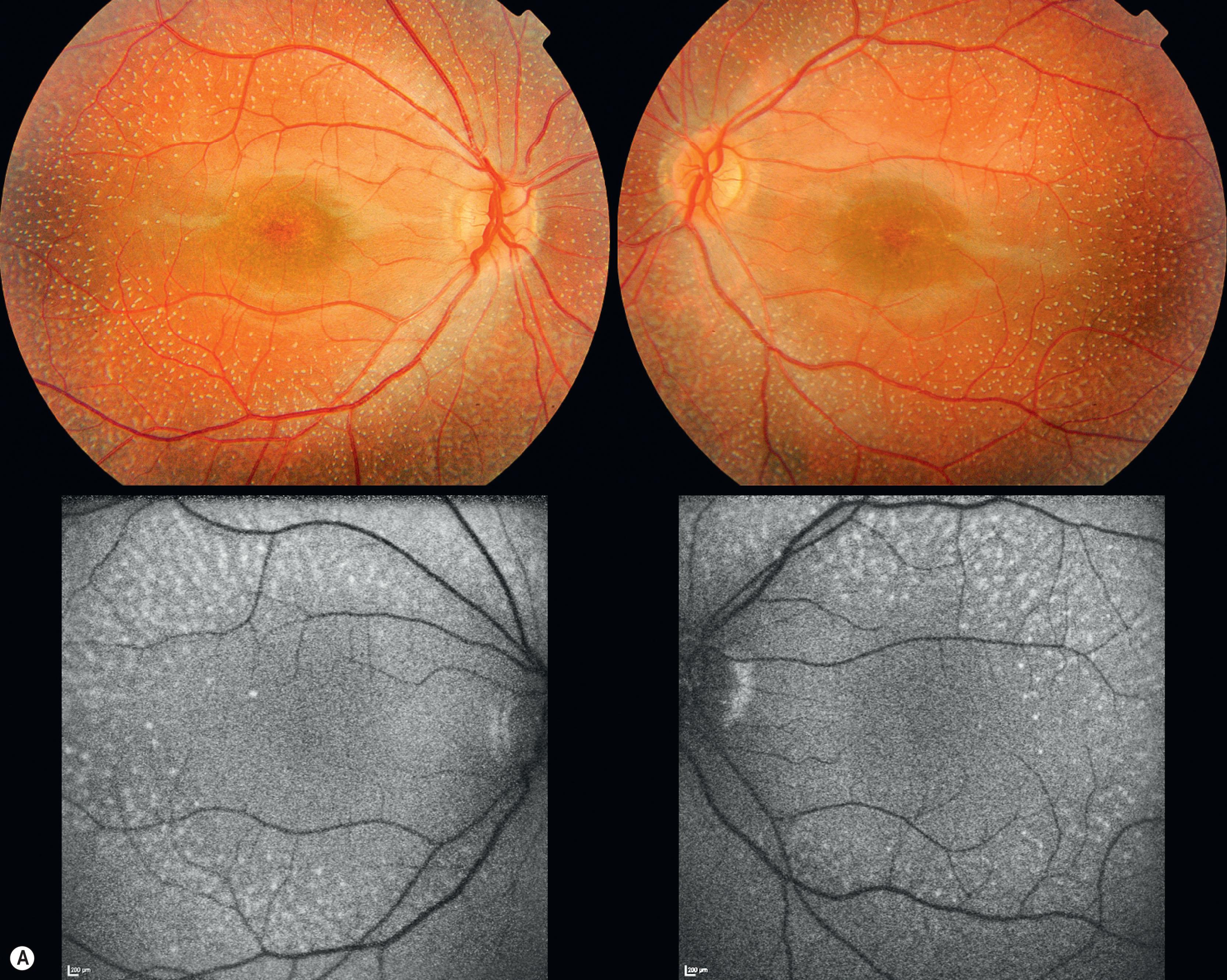Physical Address
304 North Cardinal St.
Dorchester Center, MA 02124
A number of conditions, inherited or acquired, can present with multiple yellow-white retinal lesions. These lesions may look like flecks, dots/drusen, or crystals and can be associated with a variable degree of retinal dysfunction. This chapter reviews the differential diagnosis of yellow-white spots in the pediatric retina; some disorders predominantly seen in adults (but also encountered in children) are included.
It is important to inquire about visual symptoms such as blurred vision, night vision problems, or light hypersensitivity and to obtain a family history. Examination of relatives can be helpful, as other affected family members may remain asymptomatic. Current or previous systemic drug administration and dietary habits should be inquired after. Careful note should be taken of any other medical disorders particularly those associated with malabsorption (e.g. cystic fibrosis ).
When examining the child, the distribution of retinal deposits, their depth in the retina, and whether they are crystalline in nature should be noted. Investigations that may assist in the differential diagnosis include optical coherence tomography (OCT), fundus autofluorescence (FAF) imaging and, in some cases, psychophysical and electrophysiological (electroretinogram [ERG] and electro-oculogram [EOG]) testing. Molecular diagnostic testing, including gene panel tests, can be particularly helpful in confirming the diagnosis (see also Chapter 10 ).
Stargardt disease is a common retinal dystrophy, typically associated with autosomal recessive inheritance and biallelic variants in the ABCA4 gene. Pseudodominant inheritance can be observed, particularly in consanguineous families. In such cases, it is important for counseling to distinguish ABCA4 -related disease from phenotypically similar autosomal dominant disorders including those caused by heterozygous mutations in ELOVL4 or PRPH2 .
Stargardt disease is characterized by the presence of yellow-white flecks that are located in the deep retinal layers and are scattered throughout the posterior pole ( Fig. 49.1 ). These classical flecks are not always present at diagnosis, but can appear later in the course of disease. Macular atrophy is common, and affected individuals typically present with reduced visual acuity in the first or second decade of life; night vision problems and light hypersensitivity may also be present. Some patients have good central vision with minimal or no macular involvement at presentation, and may be diagnosed with fundus flavimaculatus (i.e. retinal flecks without macular atrophy). Stargardt disease and fundus flavimaculatus are parts of the phenotypic spectrum of the same genetic disorder.

FAF imaging is a useful monitoring tool and allows detection of the abnormal phenotype even when it is not otherwise evident on fundoscopy (including in children presenting with unexplained visual loss). Abnormalities in the form of a speckled hyper- and hypo-autofluorescent pattern and/or focal areas of increased signal spatially correlating with the retinal flecks may be observed. OCT allows accurate assessment of disease severity and enables detection of early structural changes. A “dark choroid” has been classically described on fluorescein angiography, although this imaging modality is no longer used as a diagnostic tool for Stargardt disease.
Electrodiagnostic testing reveals attenuated central macular responses on the multifocal ERG and an abnormal pattern ERG. Full-field ERGs can be variable but may be prognostically useful, since individuals with early evidence of generalized rod and/or cone system dysfunction are likely to develop rapidly progressive disease. Notably, generalized retinal dysfunction is more common in childhood-onset than in adult-onset disease, in keeping with a more severe phenotype.
Benign fleck retina is an autosomal recessive condition associated with a distinctive retinal appearance and no apparent visual or electrophysiological deficits. Affected individuals are asymptomatic, but fundus examination reveals a striking pattern of diffuse, yellow-white flecks extending to the far periphery but sparing the foveal region ( Fig. 49.2 ). The flecks are located in the deep retinal layers and can be present in early infancy.

FAF imaging reveals multiple hyperautofluorescent lesions corresponding in location with the flecks. On OCT, there is discrete deposit accumulation located posterior to the inner segment ellipsoid zone. Normal full-field and pattern ERGs confirm the diagnosis ; multifocal ERGs may be slightly subnormal in some isopters.
Biallelic variants in the gene encoding group V phospholipase A 2 ( PLA2G5 ), and mildly elevated serum cholesterol levels have been described in some individuals with benign fleck retina.
Benign fleck retina should not be confused with a condition described by Kandori in 1972. This disorder, named “fleck retina of Kandori,” has been associated with large white lesions, possibly atrophic changes, and night blindness. It is not clear if “fleck retina of Kandori” is a genetic condition or even an independent clinical entity.
Fundus albipunctatus is an autosomal recessive disorder associated with night blindness and multiple widespread yellow-white punctate lesions ( Fig. 49.3 ); the spots spare the foveal region, are located at the deep retinal layers, and are typically present in the first decades of life. Patients are either noted to have an abnormal retinal appearance on a routine eye test or present with problems in dim illumination. On direct questioning, affected individuals often describe night vision problems from birth and delay in dark adaptation after exposure to bright light. Visual acuities and visual fields are usually but not universally within normal limits.

FAF imaging findings are variable. Some affected individuals have low autofluorescent signal and associated digital enhancement artifacts such as autofluorescence from the optic disc and large vessels. In young subjects, high-density foci partially associating with the yellow-white dots on fundoscopy can be seen (see Fig. 49.3A ). Hyper-reflective lesions extending from the RPE to the outer nuclear layer are detected on OCT (see Fig. 49.3B ). In a subset of patients, OCT reveals diffuse disruption of the ellipsoid zone.
Characteristic abnormalities on electrophysiology and dark adaptometry facilitate the diagnosis (see Chapter 45 ). Notably, dark-adapted ERG responses are subnormal following conventional dark adaptation, but partially recover or normalize following extended dark adaptation. Light-adapted ERGs and pattern ERGs can be normal or abnormal and adaptive optics imaging reveals an irregular macular cone mosaic.
Molecular testing can be useful: fundus albipunctatus is commonly associated with biallelic mutations in RDH5 , a gene encoding an enzyme with 11- cis- retinol-dehydrogenase activity. This enzyme catalyzes the oxidizing of 11- cis -retinol to 11- cis -retinaldehyde, the universal vertebrate chromophore of visual pigments in human RPE. Mutations in RPE65 and RLBP1 have also been described in patients with some features of fundus albipunctatus.
Retinitits punctata albescens is a variant of recessive retinitis pigmentosa characterized by multiple retinal yellow-white dots rather than pigment deposition. Affected individuals present with night and/or peripheral vision problems; early macular involvement resulting in visual acuity loss may also be a feature of the disorder. On fundoscopy, yellow-white spots similar to the ones seen in fundus albipunctatus are observed ( Fig. 49.4 ). These spots spare the fovea and may evolve to give rise to a more classical pigmentary retinopathy. It is important to differentiate early retinitis punctata albescens from fundus albipunctatus: the prognosis for daytime vision is considerably better in the latter and the former features more severe and progressive retinal degeneration. Vascular attenuation, visual field loss, retinal thinning on OCT, and a more severe electrophysiological phenotype are key distinguishing features (see Chapter 45 ).

Retinitis punctata albescens is primarily associated with biallelic mutations in RLBP1 ; this gene encodes a key component of the retinal visual cycle with a role in maintaining normal cone-driven vision and in accelerating cone dark adaptation. Biallelic (recessive) mutations in LRAT and heterozygous (dominant) mutations in PRPH2 / RDS and rhodopsin have also been described in a small number of retinitis punctata albescens cases.
Newfoundland rod–cone dystrophy and Bothnia dystrophy are two childhood-onset forms of retinal disease that have high prevalence in the genetically isolated populations of northeastern Canada and northern Sweden, respectively. Both share genetic etiology ( RLBP1 mutations) and key phenotypic features with recessive retinitis punctata albescens and should be considered parts of the phenotypic spectrum of the same disorder.
Become a Clinical Tree membership for Full access and enjoy Unlimited articles
If you are a member. Log in here